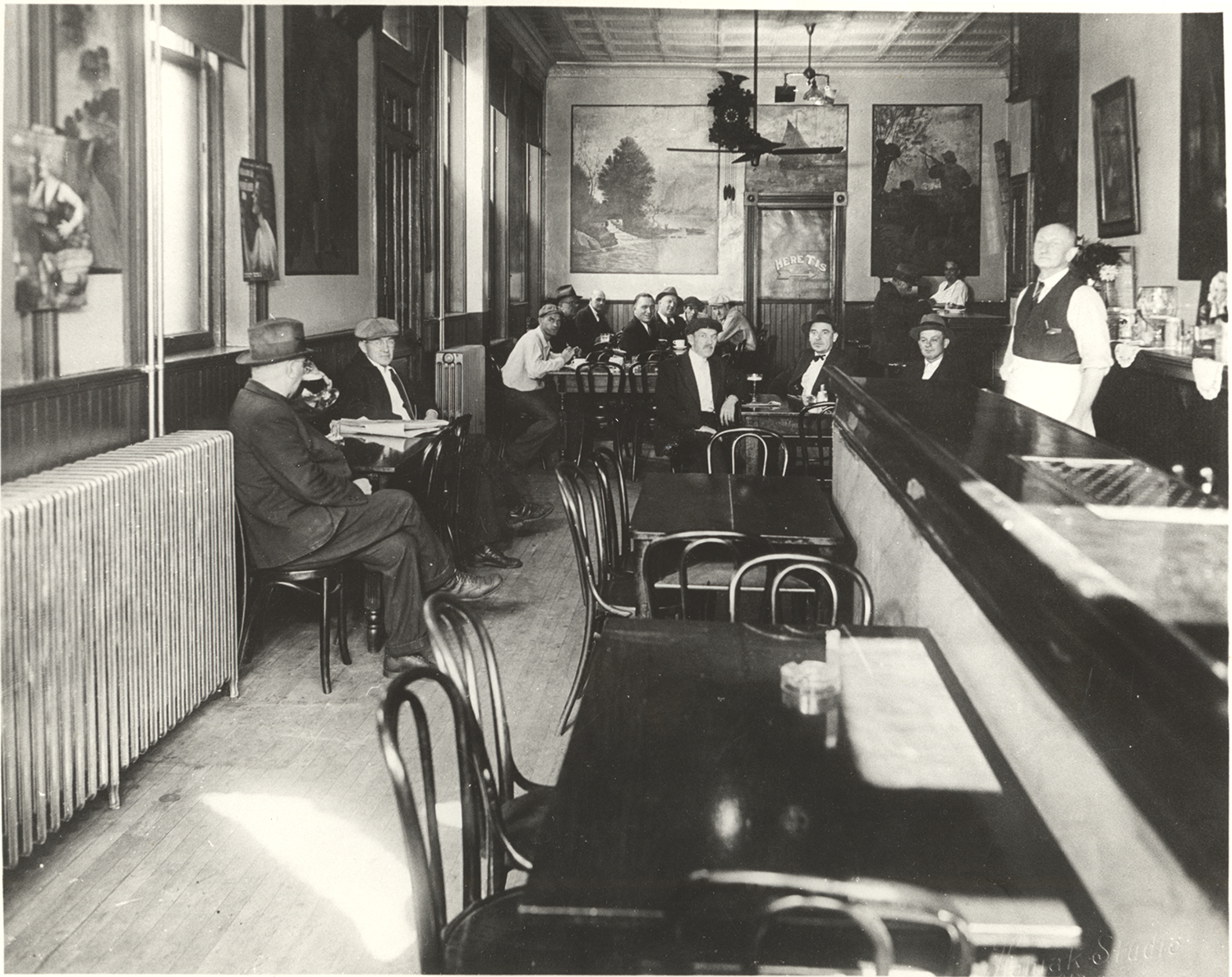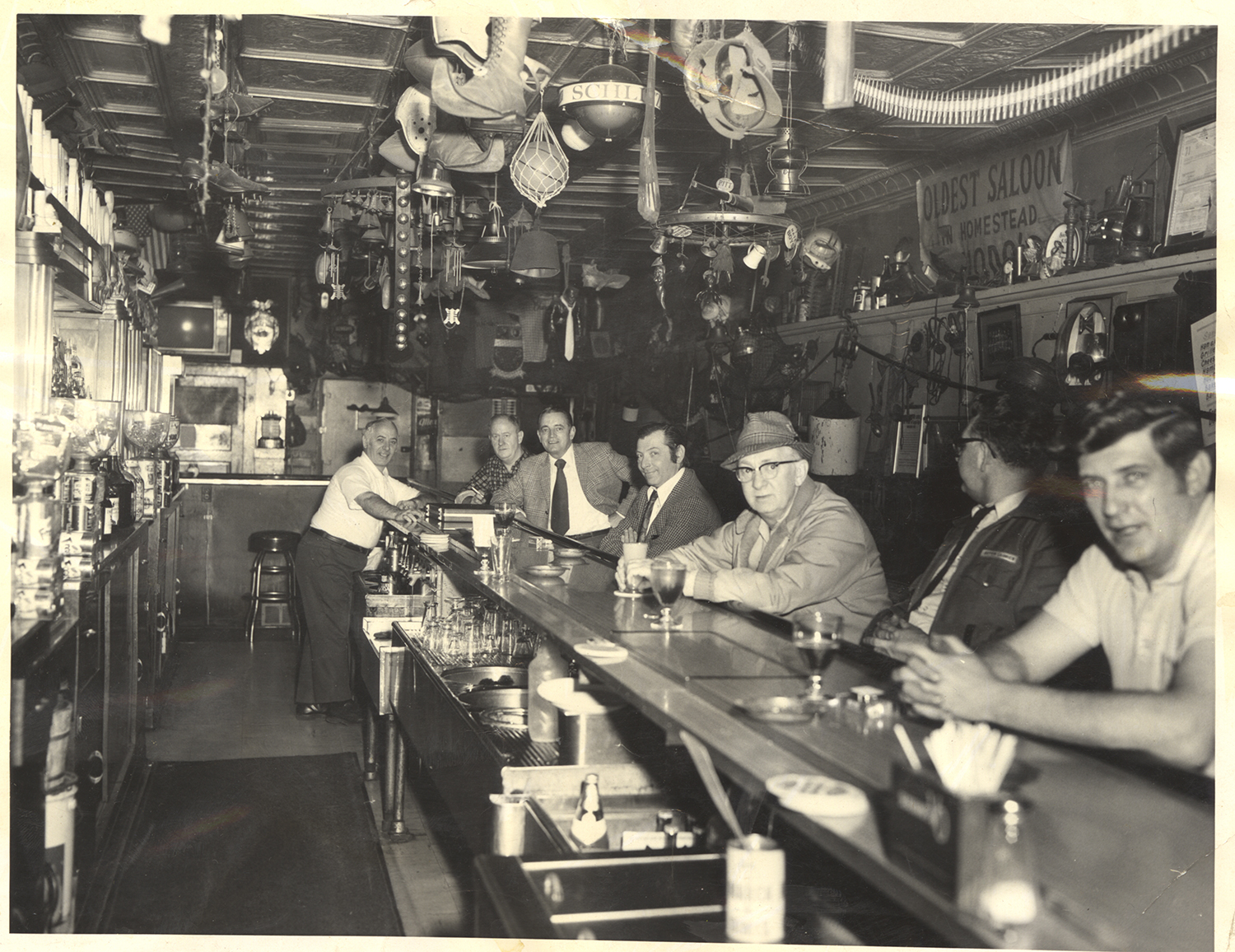This post is part of an ongoing series seeking images and documents in connection with the #Pixburgh: A Photographic Experience exhibition opening this fall at the Heinz History Center. Read all posts related to the project by searching the #pixburgh tag on our blog.
For better or worse, Pittsburgh has traditionally been known as a “shot and a beer” kind of town.
Taverns and breweries began advertising here by the 1790s. Since then, hundreds (okay, this is Pittsburgh, maybe thousands) of favorite watering holes have come and gone. From taverns that once lined Water Street along the Monongahela River (now buried under Fort Pitt Blvd.) to much-missed neighborhood bars, the History Center is seeking more images and artifacts of these places to add to the permanent collection. If you have a great photograph of your favorite bar or a long-gone corner saloon, we’d love to hear from you.
Photos of saloons and bars may not seem like “serious” history. But these are places where people gathered, debated, and celebrated: they tell us much about our city’s past. They illustrate how immigration and work patterns changed neighborhoods. They highlight where different people congregated and reveal who wasn’t welcome at the bar before Prohibition changed America’s drinking habits.
They also show how social customs and legal standards sometimes clashed in ethnic neighborhoods. More than a few photos of saloon interiors show children at the bar. Were saloons really serving minors? In some cases, yes. Especially in German, Italian, and Eastern European neighborhoods, saloons were known to serve minors, regardless of legal restrictions. It was part of the culture, although a few rounds in Liquor Court usually encouraged proprietors to change their practice.


More often, children were sent by their parents to pick up beer to take home. Saloon owners routinely testified that they were willing to engage in the “growler trade” with children – filling a pail or growler with beer for home delivery – as long as parents permitted it. Legal or not, Liquor Court judges often regarded the practice with less disapproval than the more unpardonable violation of selling on Sundays.
Saloon photos can also illustrate the impact of national events such as Prohibition. The History Center’s collection includes two images of Zoglmann’s saloon and restaurant at 601 East Carson Street. The first image, taken around 1910, shows the place as it opened, complete with ornate back bar, foot railing, and the assortment of antlers and hunting murals that were practically mandatory in any good saloon.
Another image captures the same location in 1934. Prohibition had been repealed. Men are drinking beer again, but the “saloon” is gone. Tables replace thirsty patrons along the bar and the back bar has been removed or diminished: there are no more antlers. It’s a cleaner, lighter space. It’s now a restaurant that serves beer; it’s no longer a saloon.
How many similar places came and went along Carson Street? Think of the crowds that still gather there to celebrate events such as the Pittsburgh Penguins recent Stanley Cup victory. These places are part of the story of this place we call home. Check your attics and old scrapbooks. Where do you gather to celebrate today? Where did your parents or grandparents go?
Leslie Przybylek is curator of history at the Heinz History Center.
Use the form below if you have old images, documents, or artifacts related to Pittsburgh’s past. We’d love to talk with you about adding unique content to our permanent collections. Please include a brief description along with your contact information and a History Center team member will be in contact with you.





